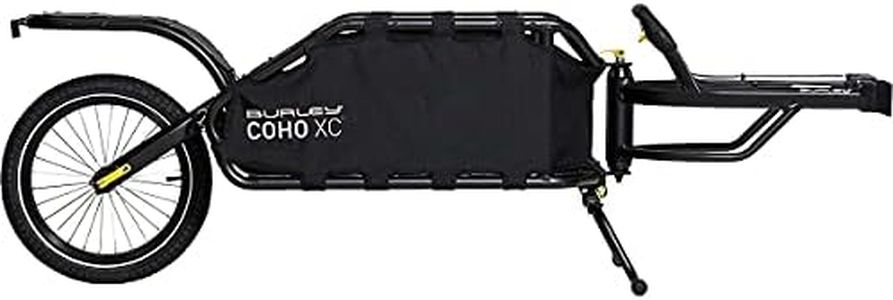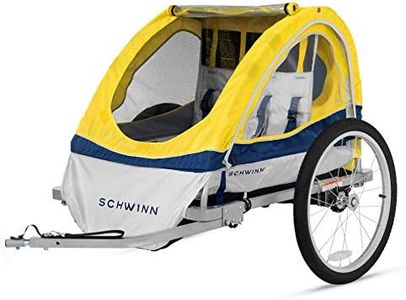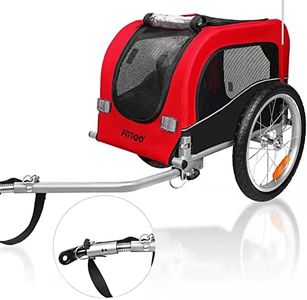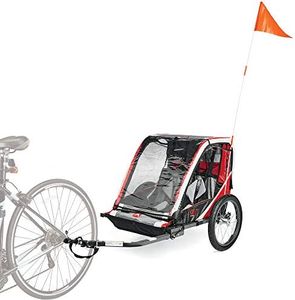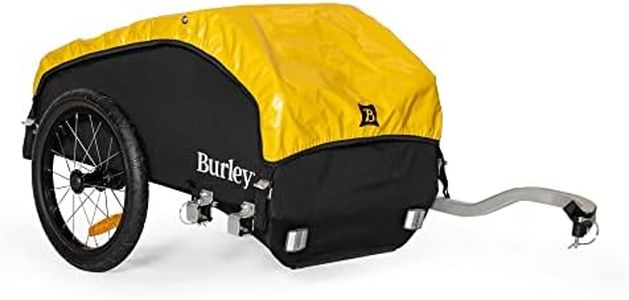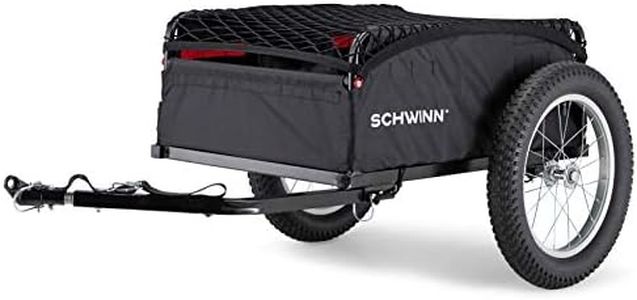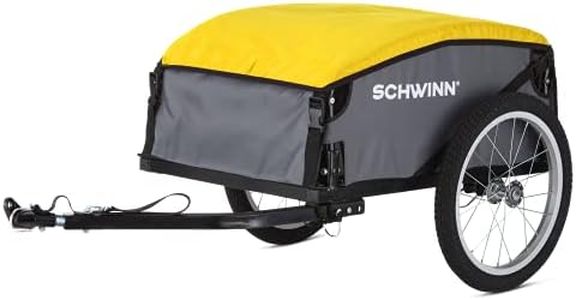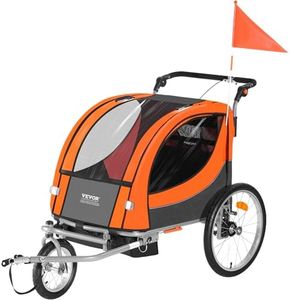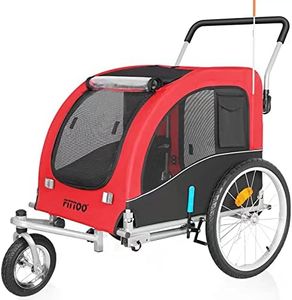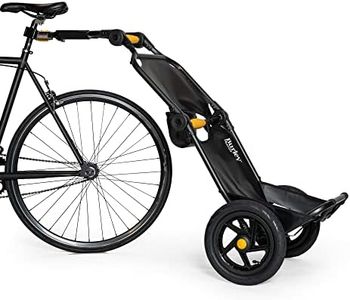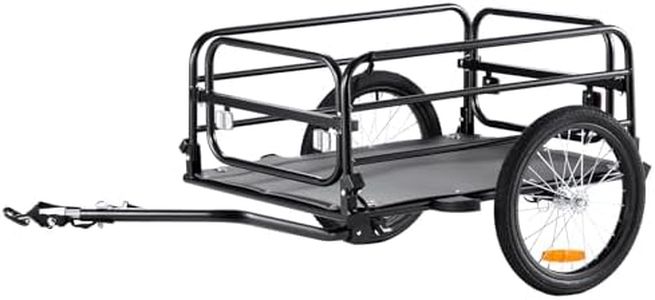We Use CookiesWe use cookies to enhance the security, performance,
functionality and for analytical and promotional activities. By continuing to browse this site you
are agreeing to our privacy policy
10 Best Bicycle Trailers
From leading brands and best sellers available on the web.Buying Guide for the Best Bicycle Trailers
Choosing a bicycle trailer can enhance your cycling experience, letting you transport kids, pets, groceries, or gear. With so many designs and features, it’s important to consider how you’ll use the trailer most often. Think about who or what you’re towing, your typical riding conditions, and how often you’ll use the trailer. Pay attention to key specs that affect safety, convenience, and ease of use. Understanding what each feature means and how it aligns with your needs will help you make the best choice.Capacity and Weight LimitCapacity refers to the number of passengers (kids or pets) the trailer can hold, and the weight limit is the maximum load it can safely carry. This is vital because exceeding the weight limit can compromise safety and lead to trailer damage. Trailers are often classified as single or double capacity, supporting one or two children respectively. Weight limits typically range from around 40 pounds for light-duty trailers up to 100 pounds or more for robust, multi-use trailers. Your decision should depend on whether you plan to carry one child, two children, or just cargo, and always account for the combined weight of your riders or cargo to ensure safety.
Hitch Type and CompatibilityThe hitch is the connector between your bicycle and the trailer. Hitch type matters because it affects ease of attachment and stability during rides. Some hitches connect to the bike's frame or rear axle, while others use the seat post. It's important to check if the hitch type matches your bike style, especially if you have disc brakes or an unusual frame. Quick-release hitches are great for frequent mounting and unmounting, while fixed hitches offer extra stability. Choose a trailer with a hitch that fits your bike and style of usage – frequent commuters might prefer quick-attach hitches, while adventurers may value stability and versatility.
Safety FeaturesSafety features include things like harness systems, reflectors, flags, and protective frames. They are crucial for protecting passengers and increasing trailer visibility to motorists. Harness systems usually come in 3- or 5-point configurations, with 5-point systems offering more security for young kids. Look for trailers with highly visible colors, reflective materials, and safety flags, which are essential for riding in traffic. If you prioritize riding in busy areas or at dawn/dusk, enhanced visibility features and robust harnesses will be especially important.
SuspensionSuspension refers to shock-absorbing components built into the trailer to smooth out bumps and rough terrain. Some trailers have no suspension and are best for smooth, paved paths, while others have full suspension for comfort on uneven trails. If you mostly ride on city streets, a rigid trailer is probably sufficient, but for off-road or longer rides, suspension can make the ride comfortable for passengers and protect the cargo or child inside.
Enclosure and Weather ProtectionThe enclosure is the protective covering around the trailer, often made of fabric with windows, insect screens, and rain covers. This is important for keeping kids or pets comfortable and safe from weather, dust, and bugs. Trailers range from open frames to fully enclosed, weatherproof models. If you want to ride year-round or in unpredictable weather, choose a trailer with adequate weather shields, removable covers, and good ventilation. In dry climates or fair weather, simple mesh screens may suffice.
Folding and StorageFolding and storage capabilities refer to how easily the trailer can be collapsed for transportation or storage. Some trailers fold flat or have quick-release wheels, making them suitable for people with limited garage space or those who need to pack the trailer into a car. If you have limited storage room or plan to travel often with your trailer, prioritize models that advertise compact folding designs.
Wheel SizeWheel size affects stability, ride comfort, and maneuverability. Typical trailer wheels range from 12 to 20 inches in diameter. Larger wheels are smoother and handle bumps better, making them good for varied terrain and longer journeys. Smaller wheels work well for shorter, city-based rides and compact storage. Consider longer routes or bumpier paths if you want larger wheels, but for city use, smaller may be fine.
